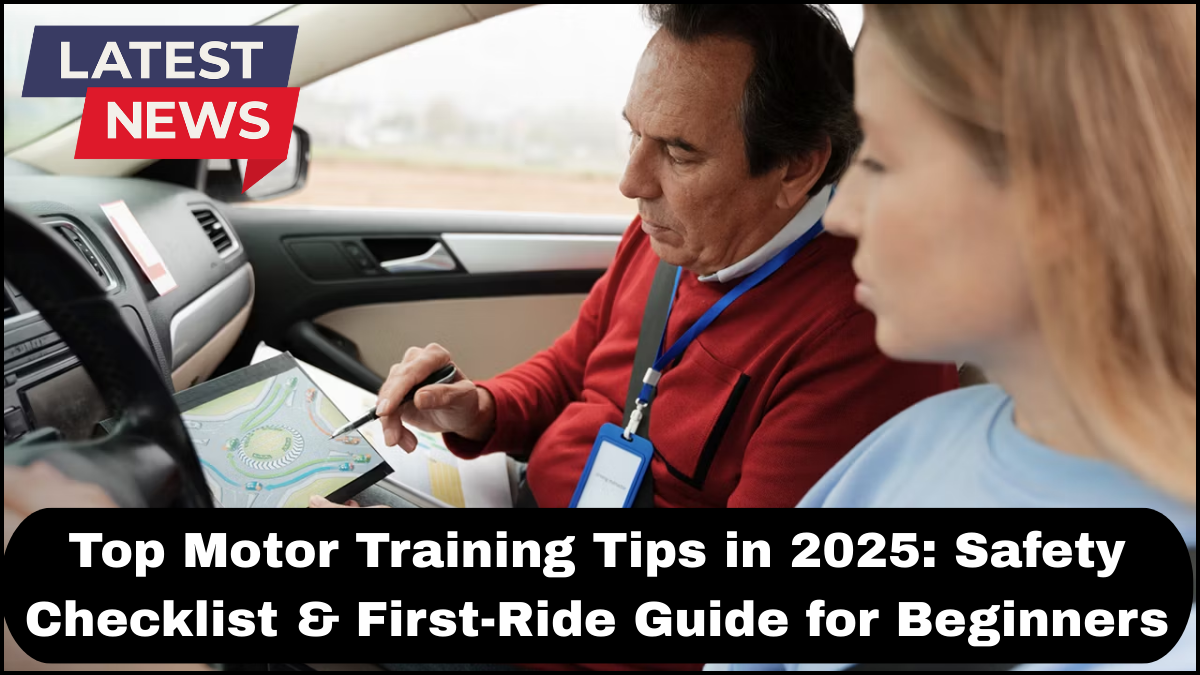Getting on a motorcycle for the first time is exciting, but it demands respect for safety and skill. Whether you’re enrolling in a certified course or learning through hands-on sessions, understanding key principles can make your experience safer and more enjoyable. Here’s your comprehensive guide packed with top motor training tips for first-time riders, safety essentials, and smart first-ride advice.

Understand the Basics Before You Ride
Before you even touch the throttle, get familiar with the fundamentals. A quality driving school advice beginners should stress theory just as much as practice. Know the parts of your motorcycle—brakes, throttle, clutch, gears, indicators—and understand how each affects your ride.
Many beginner-friendly programs now use virtual simulators to help you build familiarity in a risk-free environment. Take full advantage of these resources to minimize mistakes during your actual first ride.
Choose the Right Training Program
Not all motorcycle training programs are created equal. When looking for a school, prioritize these qualities:
-
Certified Instructors: Check that trainers are accredited and experienced.
-
Structured Curriculum: A clear progression from theory to practicals.
-
Modern Equipment: Up-to-date bikes and safety gear.
-
Low Student-to-Instructor Ratio: More attention to individual learners.
Most importantly, the program should provide tailored driving school advice beginners can actually follow and retain.
Gear Up Properly—Safety First
Wearing the right gear is non-negotiable. Protective clothing doesn’t just shield you from the elements; it can be the difference between a bruise and a broken bone.
Your Essential Safety Checklist Includes:
-
DOT or ECE certified helmet
-
Armored jacket and pants (preferably abrasion-resistant)
-
Full-finger gloves with grip
-
Ankle-covering boots with non-slip soles
-
Reflective vest (especially for night riding)
Don’t compromise on quality just to save a few bucks—this gear is your first line of defense.
Master Clutch Control and Smooth Throttle Use
One of the most overlooked top motor training tips for first-time riders is learning how to manage the clutch and throttle smoothly. Jerky movements not only make the ride uncomfortable but also increase the risk of stalling or tipping.
Pro Tip: Practice “friction zone” control in a quiet parking lot. Ease the clutch out slowly until the bike begins to move—then stop and repeat. Pair this with gentle throttle engagement until it feels instinctive.
Practice Braking—Not Just Speeding
New riders often focus on acceleration and overlook the importance of braking. Learn to brake progressively using both the front and rear brakes. Quick stops require finesse to avoid skidding.
Set up cones or markers and simulate emergency stops during your practice sessions. Understanding stopping distances at different speeds is vital to your safety.
Learn Slow-Speed Maneuvering
Riding slowly is often harder than riding fast. This skill is especially important in traffic or while parking.
Practice figure-eights, tight U-turns, and weaving through cones. These exercises improve balance and clutch control—both crucial for real-world riding.
Know the Traffic Rules and Road Signs
No list of driving school advice beginners should ignore road rules. Read your local traffic handbook. Know right-of-way laws, speed limits, and hand signals.
Obeying traffic laws isn’t just about avoiding fines—it’s about staying alive.
Ride with a Defensive Mindset
Always assume other drivers don’t see you. Keep a safe distance, avoid blind spots, and never make sudden moves. Your lane positioning should give you maximum visibility and escape routes.
If you’re riding in a group, maintain a staggered formation. It improves overall control and communication without bunching up.
Evaluate After Every Ride
After each session, ask yourself:
-
What went well?
-
Where did I struggle?
-
What will I focus on next time?
Journaling your progress helps lock in lessons and track your development over time.
FAQs: Motor Training for New Riders
Q1: How long does it take to learn to ride a motorcycle safely?
Most new riders feel confident after 20–30 hours of combined theory and practical training. However, ongoing practice is crucial even after you’ve passed a licensing test.
Q2: Is it necessary to take a formal motorcycle training course?
Yes. A certified course not only teaches skills but often reduces insurance costs and improves your chances of passing the license test on the first try.
Q3: Can I learn to ride without knowing how to drive a car?
Yes. While car experience helps with road awareness, motorcycle training focuses on balance and vehicle-specific skills.
Q4: What’s the best motorcycle for beginners?
Look for bikes with engines between 250cc and 500cc, upright seating, and user-friendly controls. Examples include the Honda Rebel 300, Kawasaki Z400, and Yamaha MT-03.
Q5: Should I ride alone during early practice?
No. Always have a more experienced rider or instructor nearby when starting out. Supervised practice minimizes risks and builds your confidence faster.
click here to learn more